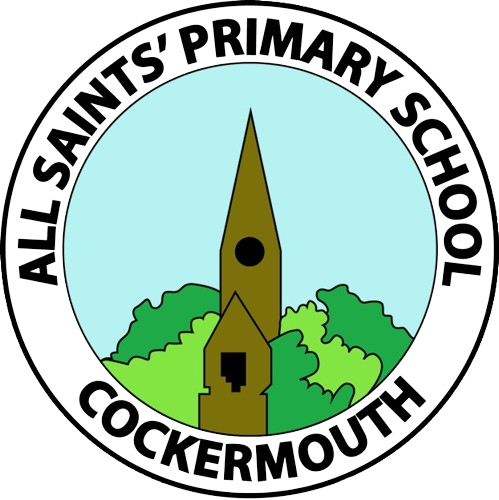The Early Years 1869 - 1901
Headmaster: Mr Morgan Edwards
The School, situated in Kirkgate (leading off from the Market Place) stood in a sheltered site presented by the then Lord Leconfield.
The cost of building was about was about £2,000. Two classrooms were added in 1896 at a further outlay of £600.
Throughout the years, the school has been closely linked with the Church. Vicars and Curates of All Saints’ all played their full part in the Religious instruction of the children. Frequently there are notes in the logbooks of the school such as “The Revd. L. H. Puxley took Standards V, VI, VII in Scripture.”
The building, soundly built of solid beams of wood and sandstone stood up well to its hundred years of Cumberland weather.
It was in 1869 that the mixed school began with Mr. Morgan Edwards as Headmaster. He had been trained at Cheltenham Training College where he had obtained a First Class Certificate.
The first recording in the log book reads:
“11th January, 1869: Opened the mixed school today with 140 children and without desks, slates, books or staff except John Bolton. Commenced sewing with about 45 girls.”
Later on 12th January: “Desks set up, slates and some books arrived.”
By 20th January: “Children cleaner in appearance. Got five minutes silence.”
By 26th January 1869, the number of scholars had risen to 174.
In those early days, children had to pay to come to school and the collection of “pence” was a feature of the timetable. Attendance was voluntary.
Again a recording in the log reads: “Number 125 against 90 yesterday. Compulsion is what we want.”
On 4th February there appears the following remark: “Sewing more general and less knitting. Girls prefer the latter as they can gossip.”
Near the school an old house tumbled in and the innocent scholars were blamed.
Homework was set frequently and was apparently well done.
Attendance was affected by the weather and a note on 17th February 1869, reads: “Attendance irregular on account of Horse Fair tomorrow.”
Again later: “177 present, good for a Friday.”
In the month of May, the attendance in the upper classes was adversely affected for the following reason: “Many left to hire out.”
On 8th August: “The attendance was low and it was said that it was owing to agricultural operations, harvest and turnips. People of Cockermouth say times are hard and children must do something to increase family income.”
Other reasons, which were given for poor attendance, seem strange to us. They were at various time: Band of Hope Excursions, Stallion Shows, Horse Shows, Cow Shows, Pig Shows, Menageries, Circuses, Town’s Picnic, Good Templars’ Demonstration at Brayton Hall, Band Contests at Workington and Keswick, Carnivals, a Golf Match and Blue Ribbon Demonstrations.
On the other hand a note reads: “Numbers have been large this week owing to the treat that is being given this afternoon after school hours.”
Girls were often kept off to clean their home before Easter or before the special events like Carnivals. Traders came in for criticism for using Scholars for work on Market days.
A sign of times in contrast with present days occurs: “A girl who made her days went to Service near Keswick.”
Pupil teachers starting usually at the age of 15 mainly carried out the teaching.
A great deal of time was spent in testing presumably with somewhat detrimental effects on the teaching. Grants were paid on results. Many of the scholars went out to work, and later returned to school when work was not available. On 31st January 1871, the staff consisted of: Morgan Edwards (Headmaster) Jas. Ellwood, Pupil Teacher (4th year). Jno. Bolton, Pupil Teacher (2nd Year). Jno. Potts, Pupil Teacher (2nd Year).
“In 1872 Mr. Moore, of Whitehall, made a casual visit-being the County Election and gave each of the children a penny.” It is presumed that this is the well-known Mr. George Moore, PHILANTHROPIST, of Whitehall Mansion (now demolished) who did so much for scholarships in Education in Cumberland in the latter half of the 19th century. Until he retired in 1901, Mr. Morgan Edwards was Headmaster with a staff mainly consisting of Pupil Teachers, who either left the service or went to College for further training. The Headmaster, in addition to his duties as Headmaster, appears to have been responsible for the training of the Pupil Teachers. The Pupil Teachers often went to Whitehaven, Keswick or Carlisle to be tested themselves.
There is no mention in the earliest years of Music, Art, and Physical Education. “Drilling” occurs often. The work of the school was often affected by infectious sickness. Scarlatina, measles, sickness and whooping cough, were the main causes. School closures for infectious sickness lasted for weeks, the highest recorded being nine weeks!
